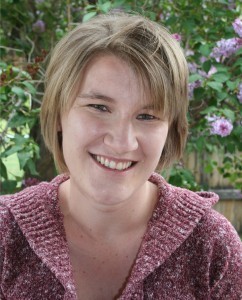Note: Crystal Amundson LCPC, RPT-S runs a private practice in Helena, Montana, where she works as a child play therapist. Crystal specializes in Play Therapy, working with children ages 2-12, alongside their caregivers. She is a previous employee and current board member at Intermountain. Her passion and expertise is in the field of early childhood mental health. Crystal prepared this case study with accompanying prompts for action by faith-based groups and community groups that hope to make a difference in the lives of children at risk in the community.
The story I’d like to share with you isn’t one child’s story. But it is a compilation of hundreds of true stories from children that have crossed my path since I began this work. My work started in the classrooms and cottages of Intermountain’s residential program in Helena, Montana. I moved to Washington for my education and worked with children in outpatient therapy, crisis shelters, and psychiatric hospitals. I started my therapist career in Denver, Colorado doing outpatient therapy, and then did school-based therapy once I moved back to Helena. I now have a private practice with a focus on therapy, training, and supervision. Every detail in the story I’m sharing is a piece of someone’s journey, and I’m grateful that you’ve given me time to share a bit about them with you, the reader. Because YOU are the game changers. And my prayer is that you hear this story with ears for opportunity. To help, I’ll pause in the telling of Rachel’s story to provide bulleted points where faith communities can make a real difference.
Now, let me introduce you to Rachel. Rachel is the second of three children. When she was born, her parents were married and looked pretty average to their family, friends, and faith community. This lasted until shortly after her first birthday, when Rachel’s dad was laid off his job and coped with the stress by abusing drugs. He became physically violent towards Rachel’s mom and her older brother. They lost their home and for nearly three years, her Rachel’s life was filled with domestic violence, homelessness, and neglect. What could have helped Rachel and her family in her first 18 months of life?
- Be aware of the warning signs of substance abuse, homelessness, and domestic violence. Everyone is at risk, regardless of income or race or employment.
- Post fliers and pamphlets in your community spaces, educating your congregation about warning signs.
- Provide space for support groups and 12 step programs to meet. Safe, consistent spaces are a blessing.
- Sometimes, people are aware of the abuse or homelessness, but local resources are full. Help increase resources by volunteering with local organizations like food banks, homeless shelters, and homes for those facing domestic violence.
On Rachel’s fourth birthday, her mom took her and her siblings to a restaurant to celebrate. While there, they ran into a friend of her mom’s, who questioned Rachel’s brother about bruising on his face and neck. He was too scared to answer, but Rachel’s mom burst into tears as she described the violent attack by Rachel’s dad. Overwhelmed by guilt and fear, Rachel’s mom said she was going to the bathroom and left the restaurant through the back door. The servers were delivering Rachel’s free dessert and singing “Happy Birthday” when a police officer showed up. What could have been done to help Rachel and her family while she was still in preschool?
- Educate yourself on what Montana Law and your faith tradition say about reporting child abuse.
- Facilitate training and education for volunteers in children’s ministry programs. Professionals need people on the front lines being the eyes and ears for welfare concerns.
- Host a workshop for parents and children about healthy body image and personal safety.
- Develop child abuse reporting policies & procedures for your congregation. This makes a difficult thing easier to do and minimizes miscommunication.
- Promote finger printing and background checks for adults working with children.
- Increase awareness by participating in activities like April Child Abuse Prevention Month.
We’ll learn more about Rachel’s story and what we can all do to help children at risk in following posts.


 Click here to subscribe to our RSS feed with your favorite email client and be alerted to new articles.
Click here to subscribe to our RSS feed with your favorite email client and be alerted to new articles.